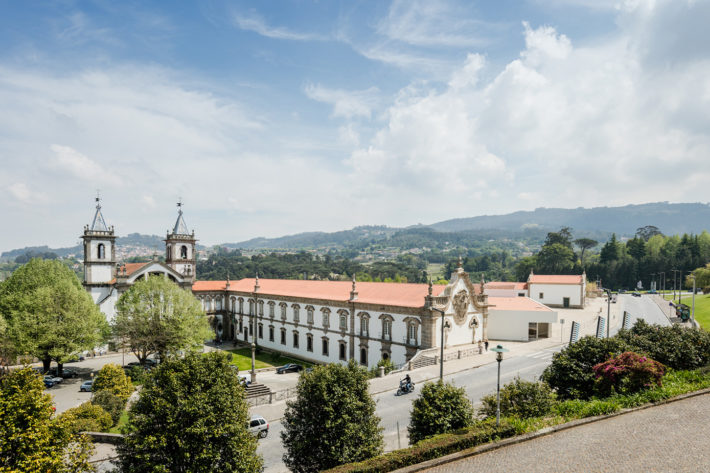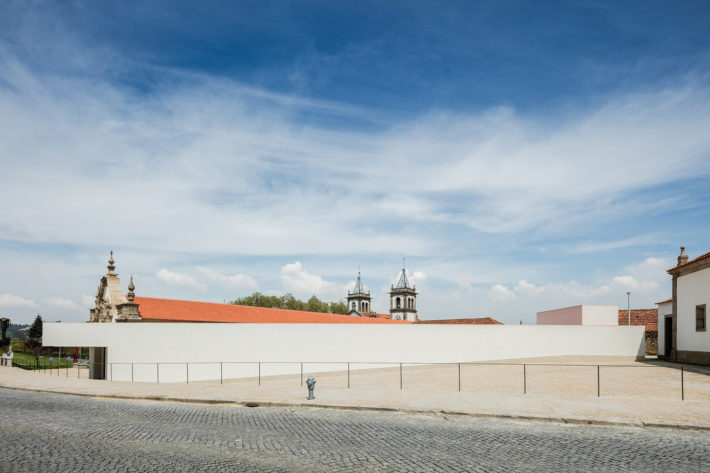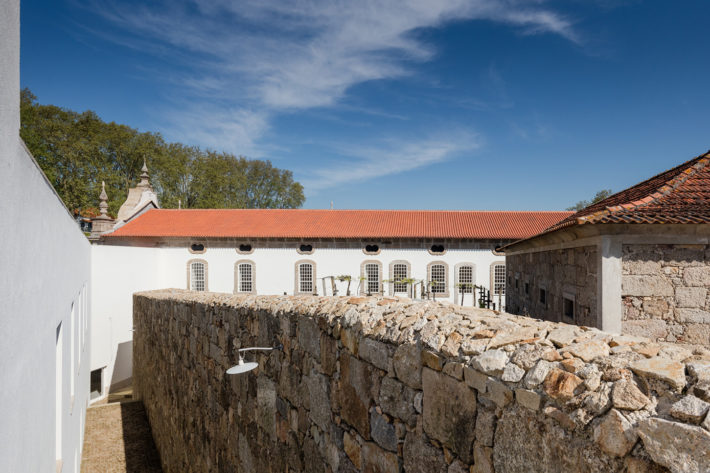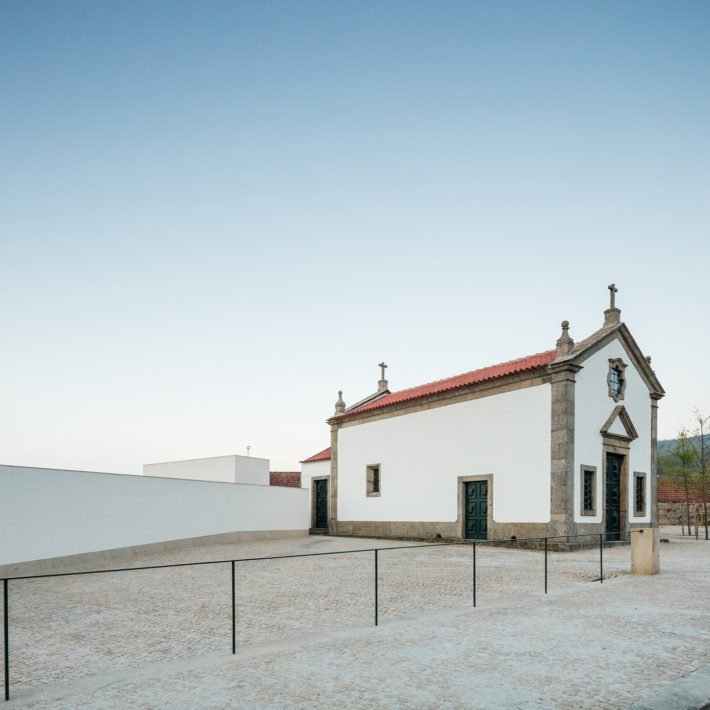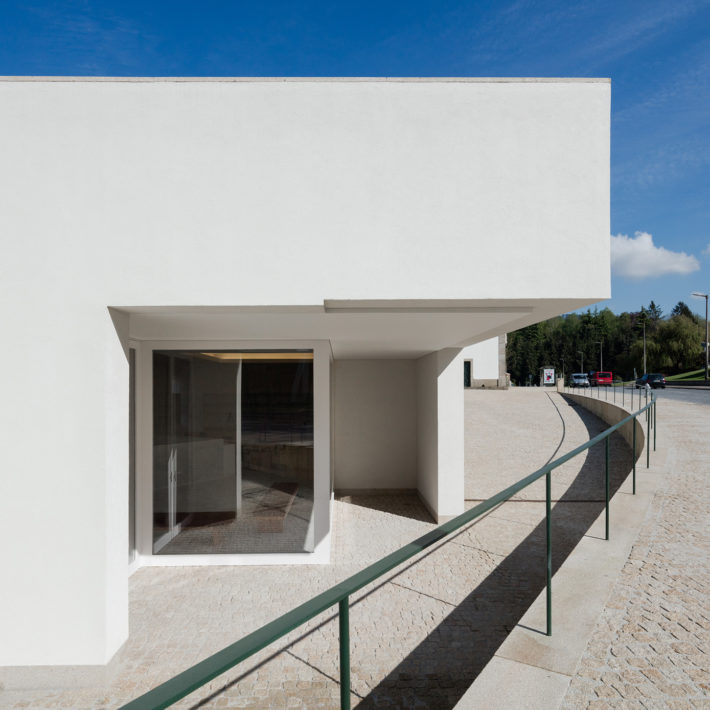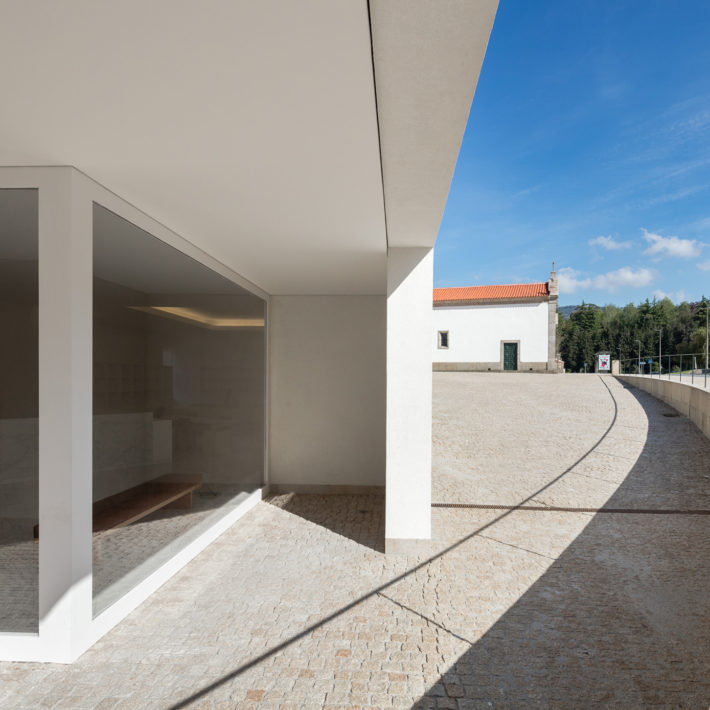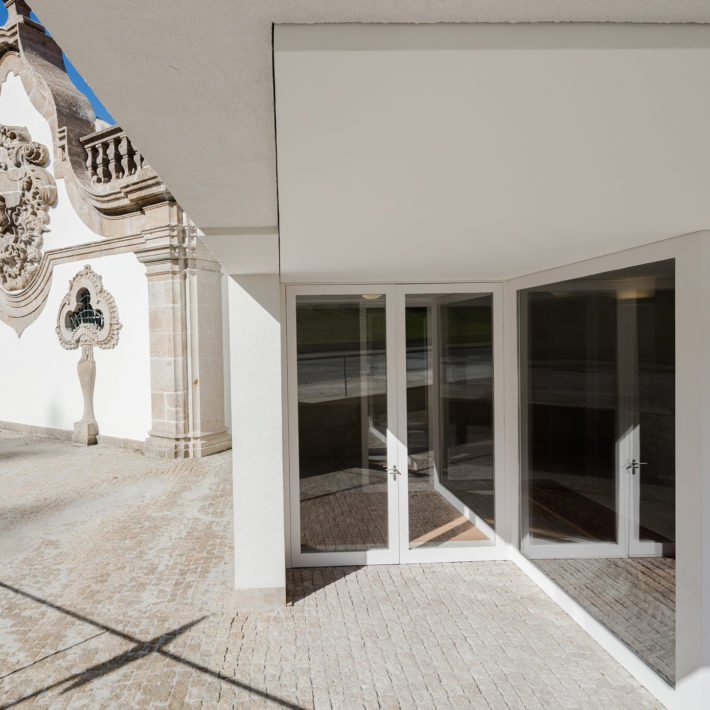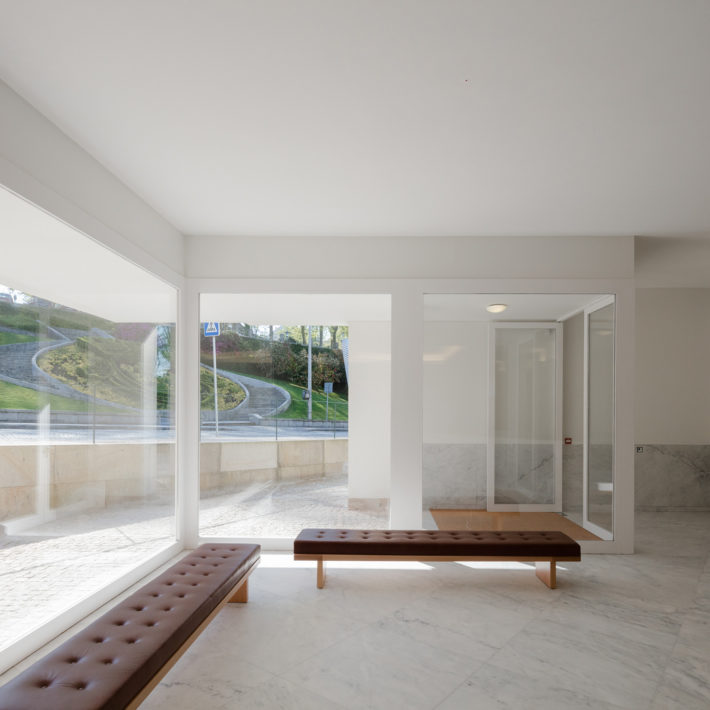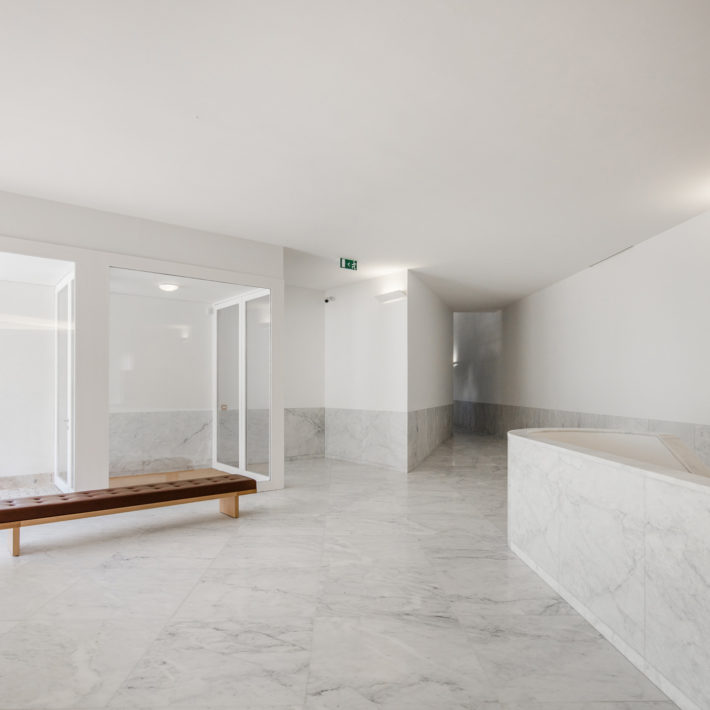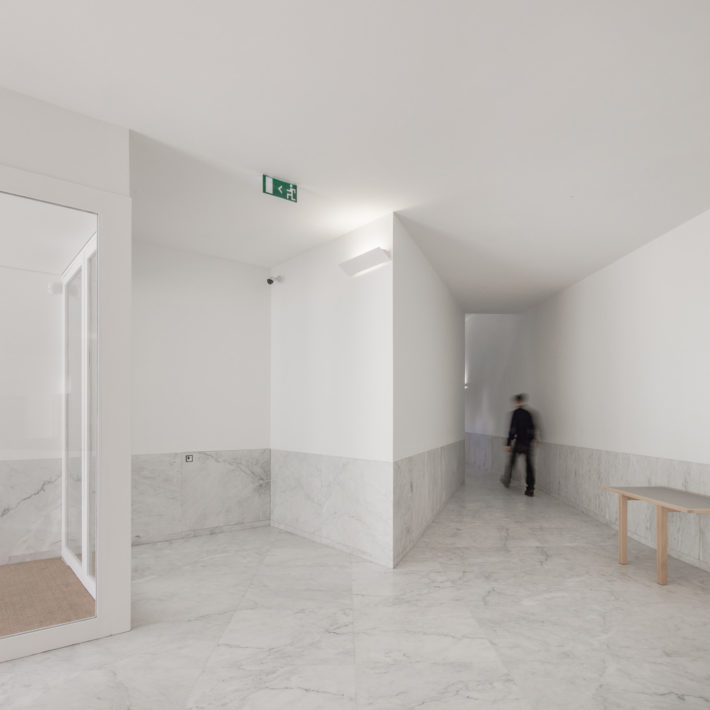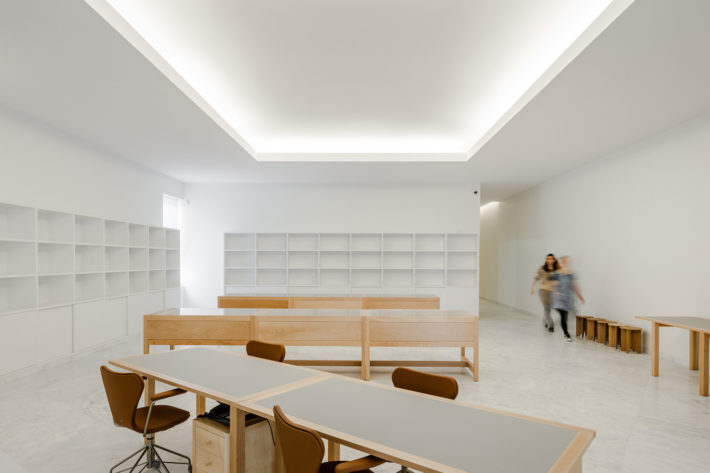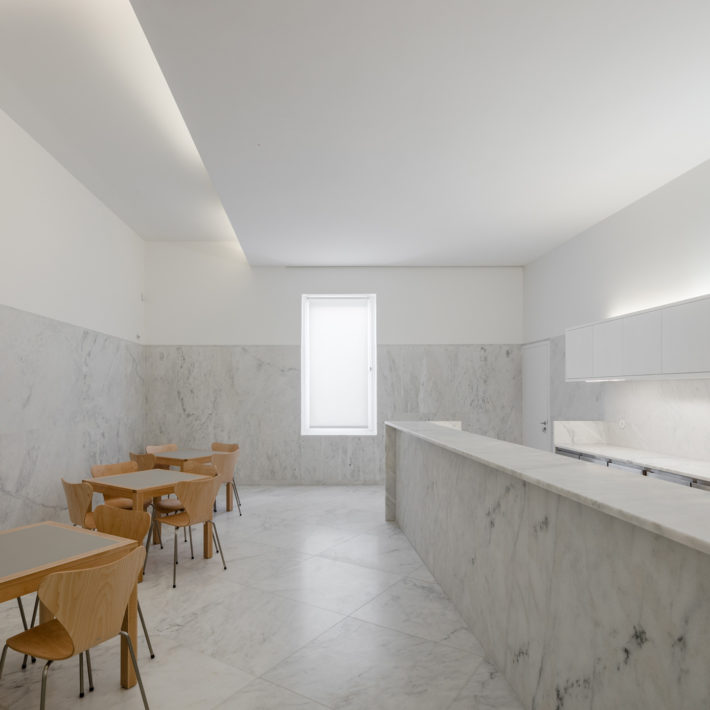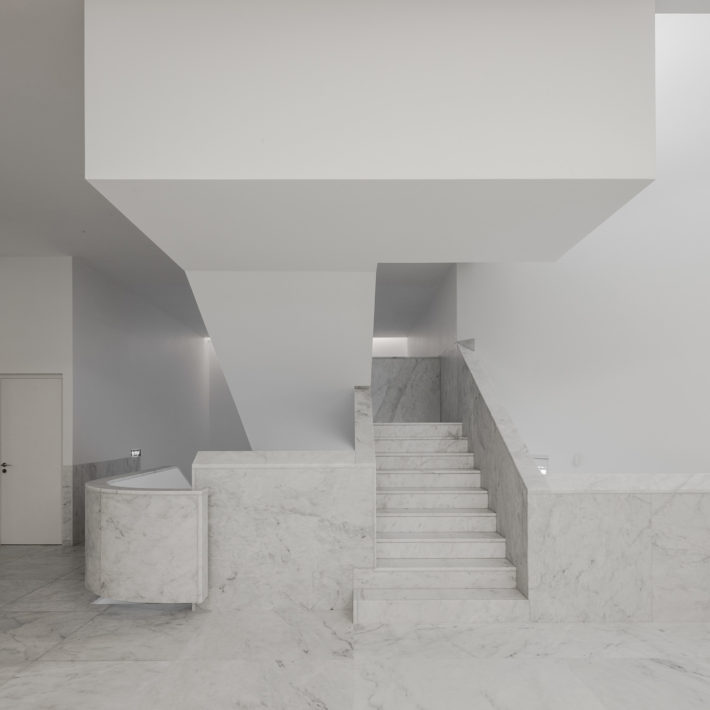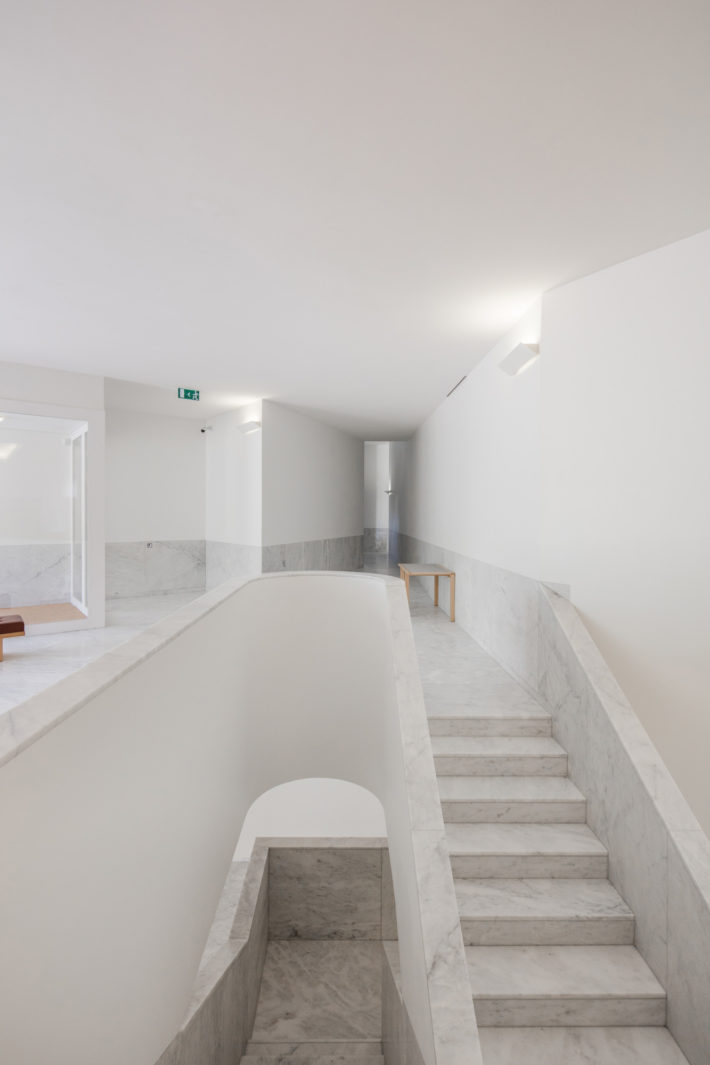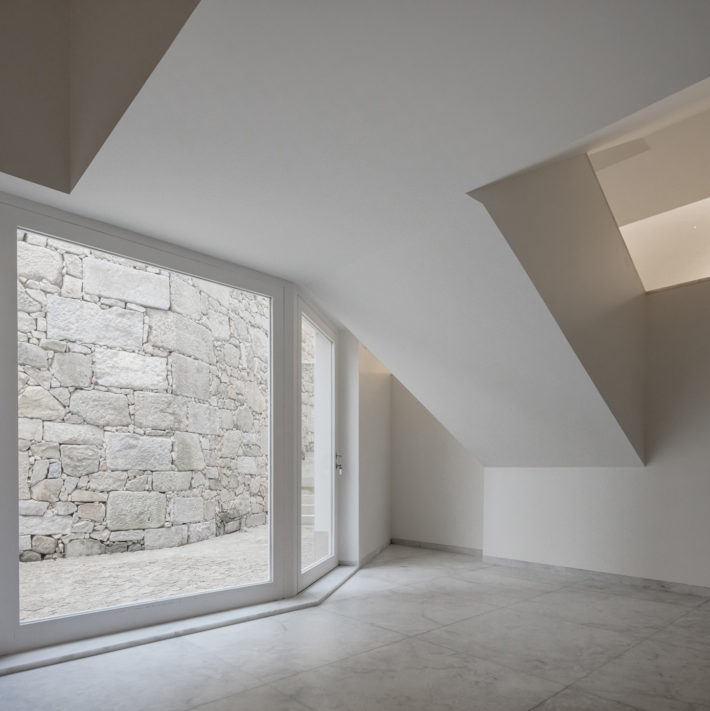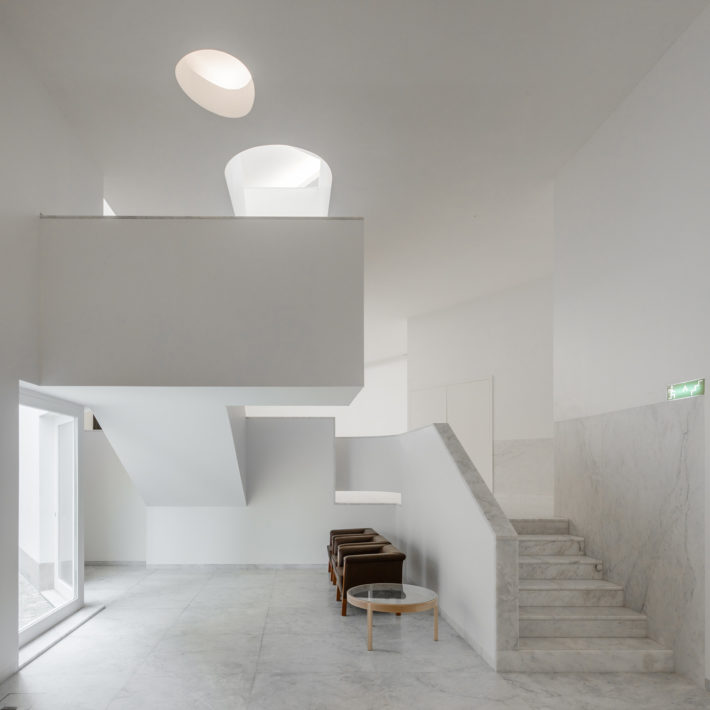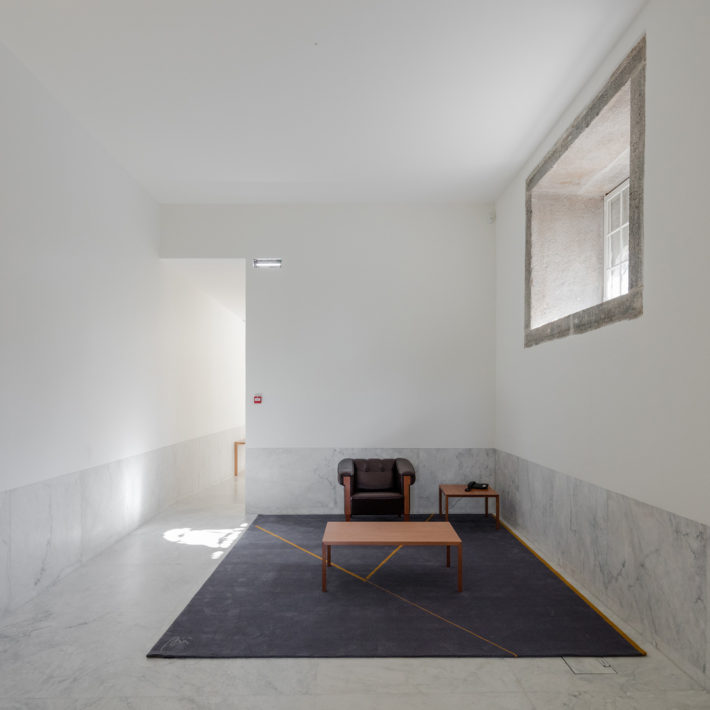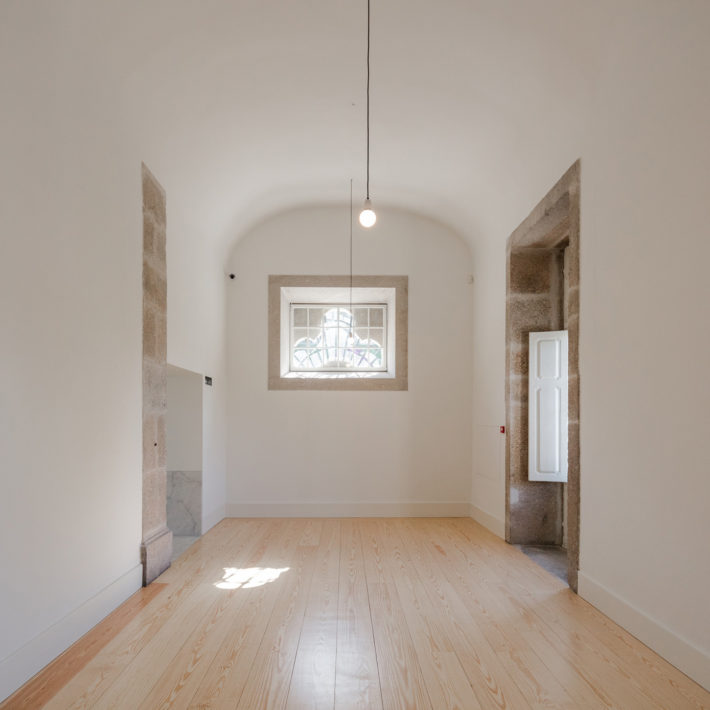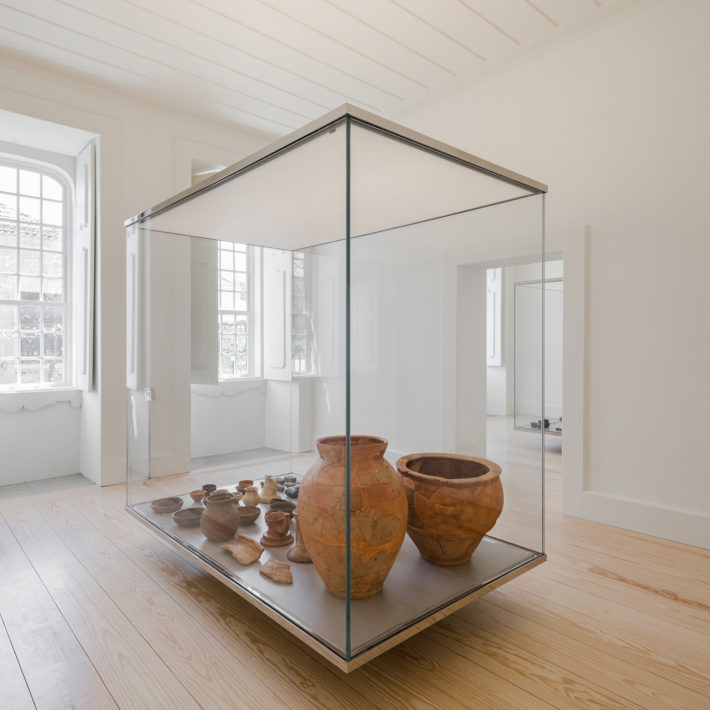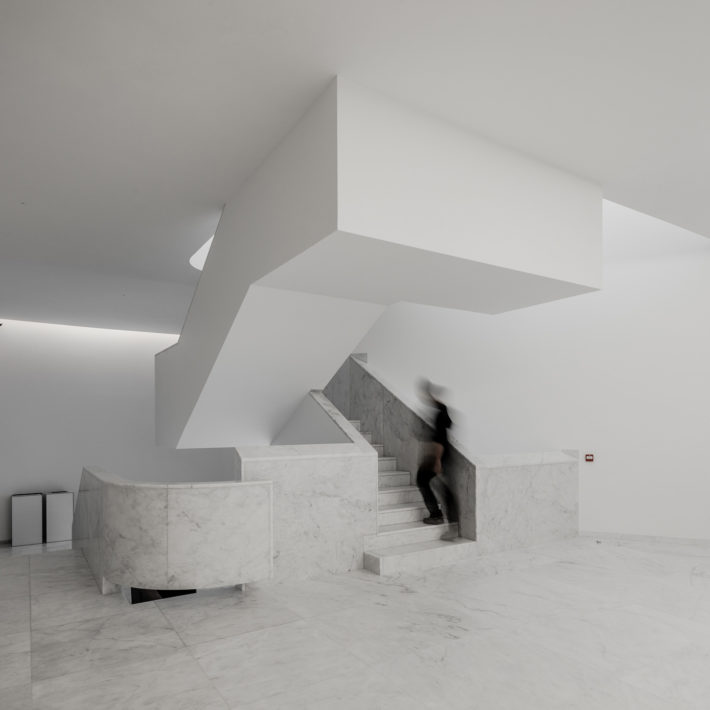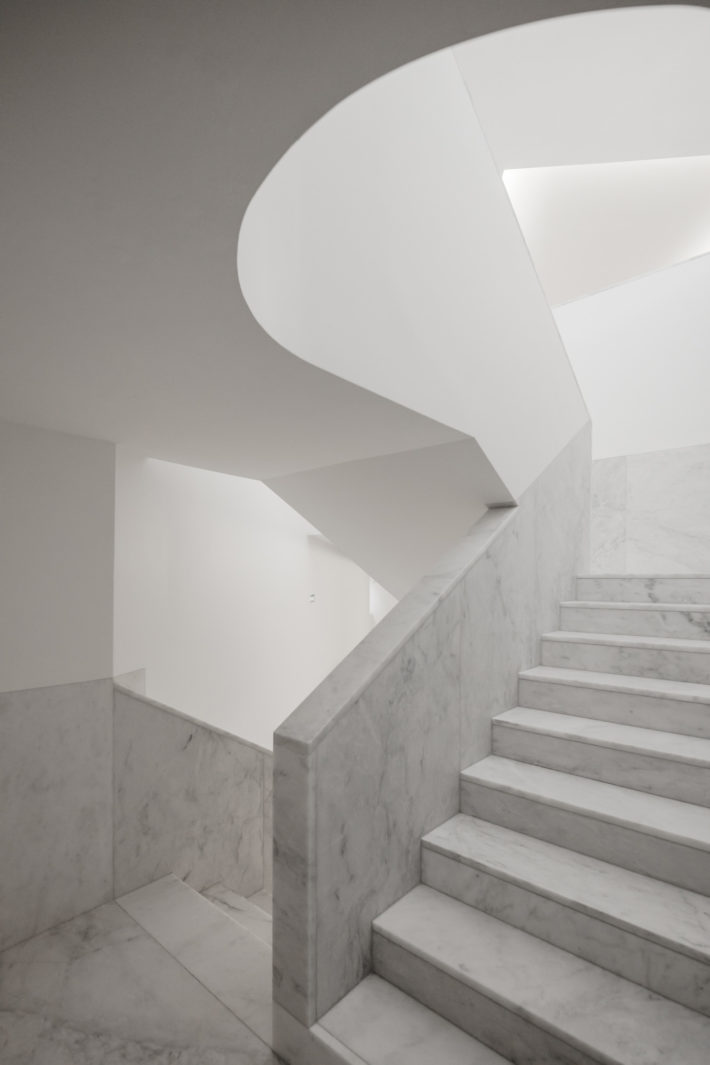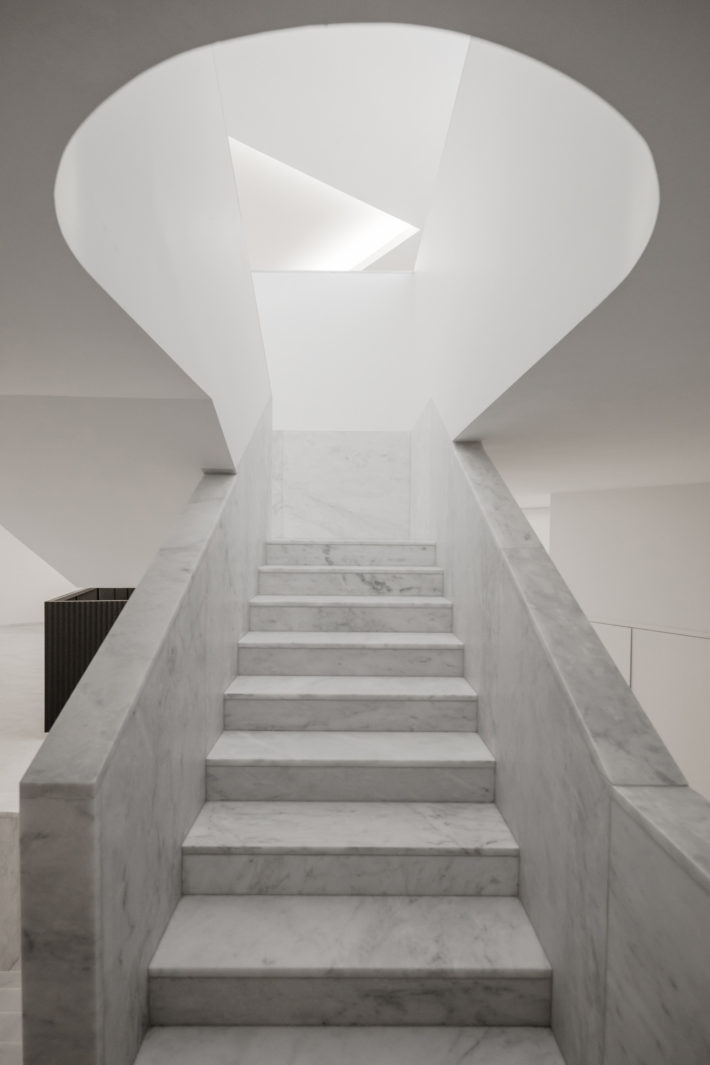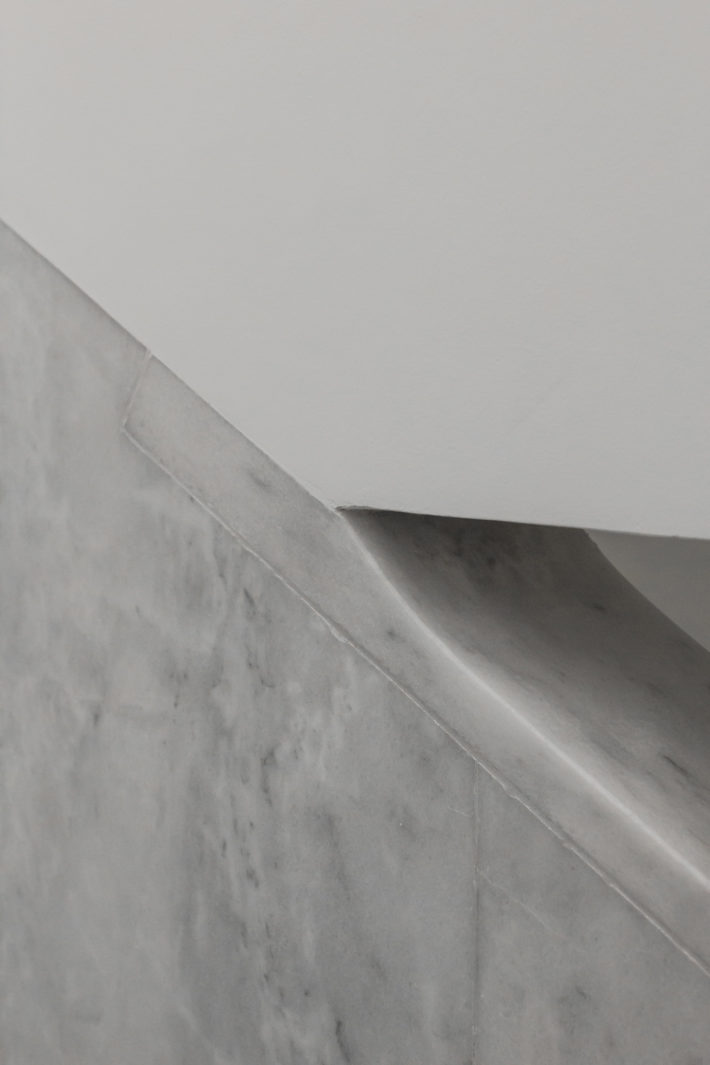3 November 2016
Not far from Porto, a city that in recent years has become a place of reference for European architecture, the small city of Santo Tirso is home to one of the masterly buildings that Álvaro Siza and Eduardo Souto de Moura have designed and built together. In the historic setting of the monastery of São Bento, the MIEC, or Museu Internacional de Escultura Contemporânea, has taken shape, a white and compact volume that is proposed as an extension of the MMAP, or Museu Municipal Abade Pedrosa. This last is housed in the 18th-century structure of the monastery, which has been renovated by the same Portuguese architects. In an apparently startling gesture, but one that is in fact motivated by the position of an existing stone wall that defines the width of the lot, Siza and Souto de Moura have set the new volume at an angle: running diagonally from the rear of the small church that stands on the edge of the site, it brushes against the façade of São Bento, characterized by the solemn exuberance of its granite decorations. The result of this arrangement has been to give the building an impetus that would have been hard to attain in any other way, and the creation of an unprecedented relationship between urban space and architecture. An inclined plane leads to the entrance of the new museum, which has been cut out of one corner of the structure. Here, a hall provides access both to the exhibition space of the MIEC and the rooms of the museum inside the monastery, which are entered through an opening whose funnel shape generates the necessary tension for the passage from present to past. This relationship, moreover, is admirably emphasized by the height of the new building, which is in line with the cornice of the 18th-century monastery, reflecting the sensibility that has underpinned the entire intervention. Inside, the minimalism heralded by the austere configuration of the shell grows even more refined and manifests itself in the different materials that succeed one another in the purity of a single color field. The interior, in fact, is neither orthodox nor simply rationalist, but reveals a structure that is never predictable and hinges on the composition of the central connecting staircase, making Siza and Souto de Moura’s creation an exemplary model of narration for contemporary design.
